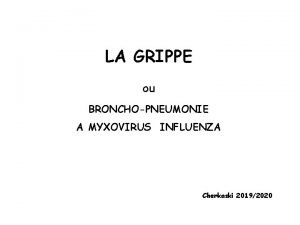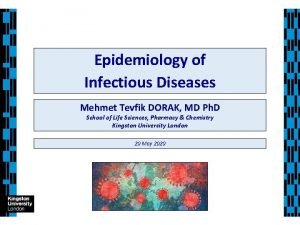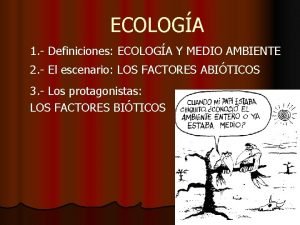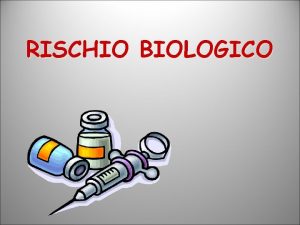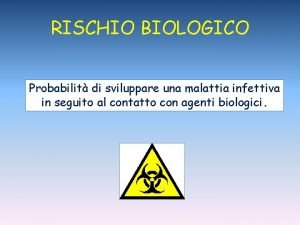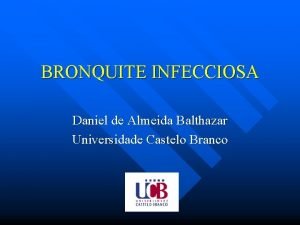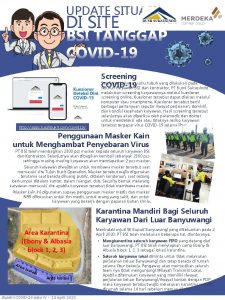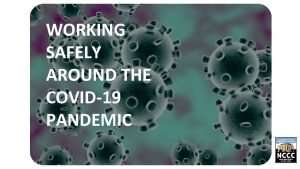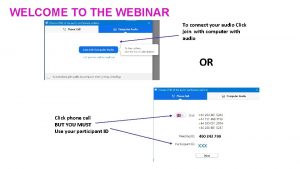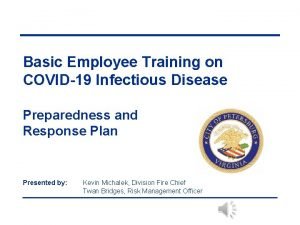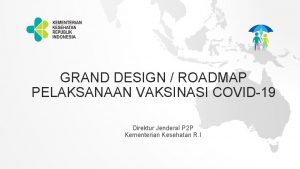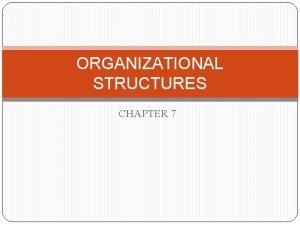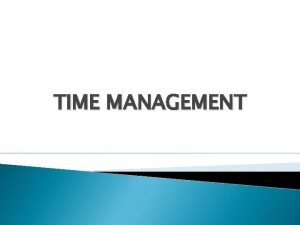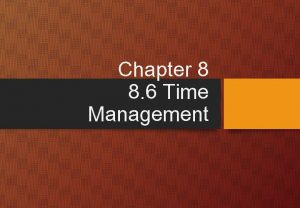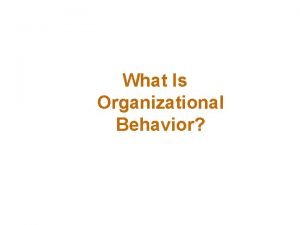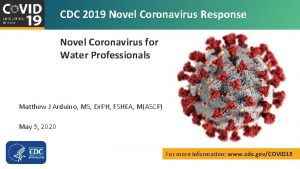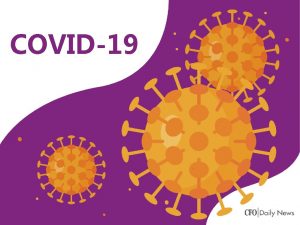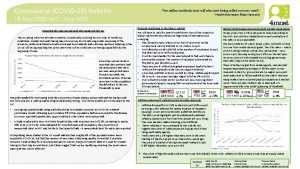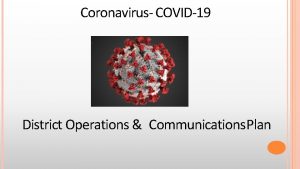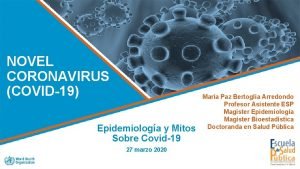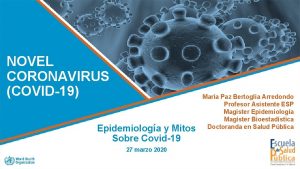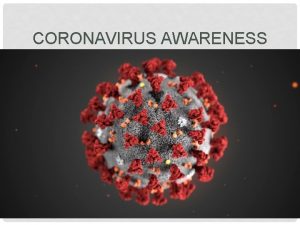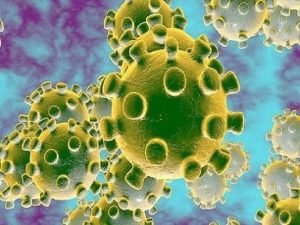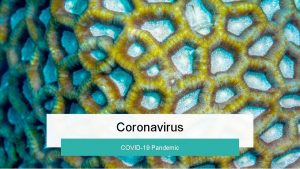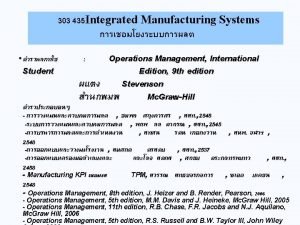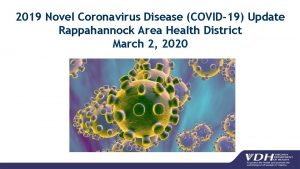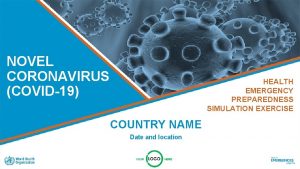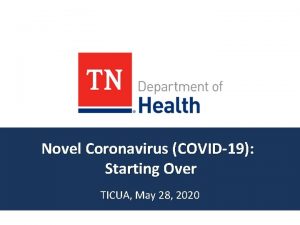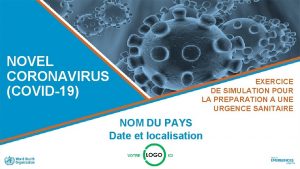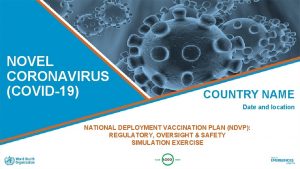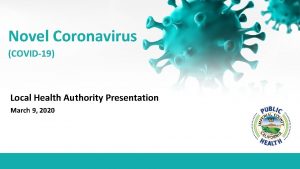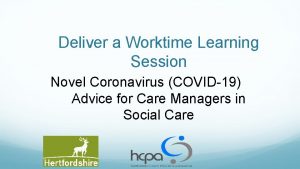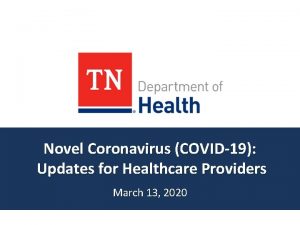NOVEL CORONAVIRUS COVID19 Organizing society around the management



































- Slides: 35

NOVEL CORONAVIRUS (COVID-19) Organizing society around the management of COVID-19; Implementing and adjusting Public Health and Social Measures (PHSM) Country NAME Date and Location SIMULATION EXERCISE HEALTH EMERGENCIES programme

Suggested Agenda Morning: Afternoon: • 08: 45 Registration 14: 00 Re-cap • 09: 00 Introduction 14: 15 Gaps analysis & action planning (group work) • 09: 10 Exercise Objectives and how to play 15: 30 Coffee break (15 min) • 09: 15 Table-top Simulation 15: 45 Action planning continued (group work) • 10: 45 Coffee break (15 min) 16: 30 • 11: 00 Table-top Simulation 17: 00 Wrap up and next steps • 12: 30 Hot-wash 17: 30 Closing • 13: 00 End of exercise • 13: 00 Lunch SIMULATION EXERCISE NOVEL CORONAVIRUS (COVID-19) 08 September 2021 Consolidation in plenary session page 2

Latest WHO Situation Report The situation is evolving rapidly. Let’s have a look at the latest WHO Sit. Rep.

Guiding Preparedness and Response WHO, providing up to date, accurate advice During health emergencies like the COVID-19 pandemic, one of WHO’s most vital roles is to gather data and research from around the world, evaluate it, and then advise countries on how to respond. Since January 2020, WHO more than 100 documents Of these, more than half technical guidance, on how to cases, how to provide safe care for people depending on their illness, how to trace contacts, how to prevent one person to another, how care workers, and how to to respond appropriately. has published about COVID-19. are detailed find and test and appropriate the severity of and quarantine transmission from to protect health help communities

What is a Table-Top Exercise (TTX)? A tabletop exercise (TTX) is a discussion based event that uses a progressive simulated scenario, together with series of scripted injects, to make participants consider the impact of a potential health emergency on existing plans, procedures and capacities. “A TTX simulates an emergency situation in an informal, stress-free environment. ” -WHO Exercise Manual, 2017 SIMULATION EXERCISE

Design & Purpose Exercise Design This exercise is based on the latest WHO PHSM guidance for COVID-19, including: § Considerations for implementing and adjusting public health and social measures in the context of COVID-19, Interim guidance, 4 November 2020: § Considerations for school-related public health measures in the context of COVID-19 Sept 2020 § Considerations for public health and social measures in the workplace in the context of COVID-19 May 2020 Purpose The Purpose of this exercise is to conceptualize and manage ongoing (local) COVID-19 outbreaks in the country, while minimizing social and economic disruption through effective public health and social measures (PHSM). SIMULATION EXERCISE

General objectives of the TTX Exercise Objectives 1. Coordination of various legislative and operational frameworks between different sectors 2. Adapting measures based on a situational assessment 3. Considerations for adjusting localized public health and social measures 4. Considerations for school-related public health measures 5. Considerations for public health and social measures in the workplace Scope The scope of the exercise encompasses key parts of continuous management of COVID-19. This includes: • Governance, particularly legislative and policy issues, • Adapting public health and social measures (PHSM) • Coordination and ensuring a consistent approach among different sectors, • Management of (local) outbreaks • Consideration for the (partially) re-opening, closure and functioning of schools, businesses and workplaces SIMULATION EXERCISE

Rules of the TTX • This is not an individual test • Respect the views of others • Consider the scenario as it would impact your assigned unit. • Use your existing plans, guidelines and regulations to inform your responses • Focus on solutions and forward planning. SIMULATION EXERCISE

Table-Top Exercise: How to Play Scenario Questions & Discussion (5) Hot-Wash SIMULATION EXERCISE Questions & Discussion (1) Questions & Discussion (4) Scenario update Facilitated Debriefing NOVEL CORONAVIRUS (COVID-19) Questions & Discussion (2) Questions & Discussion (3) Action Planning 25 November 2020 This is a closed exercise, designed just for you. The facilitators will guide you through a series of discussions focused on a COVID-19 outbreak. We are all here to learn page 9

Question s ANY QUESTION BEFORE WE START

Part One Governance and Coordination SIMULATION EXERCISE HEALTH EMERGENCIES programme

Scenario SIMULATION ONLY XXX is a town with a population of approximately 75 000 that has a mixed economy. It is an important agricultural town and is also a popular tourist destination with beaches and picturesque farming communities. The town is prominent in the region and has good transport links to other parts of the country but is not close to the national capital. Following the relaxation of some COVID-19 measures (such as re-opening cafés, restaurants and some shops) there has been a gradual up-tick in cases in the town. Local press are reporting that the reproduction rate of the virus in the district has risen to 1. 2, and there are calls to make masks compulsory in all public places 123 Foods is a major employer in the town. It is a mixed agribusiness, but locally it operates one of the largest poultry processing plants for human consumption in the region, employing approximately 1200 people. The plant consists of a number of processing units where butchers work closely together, and packing is undertaken in closed, purpose-designed facilities. Many of the employees are migrants living in crowded company-provided accommodation, although some staff live in the community. On Monday 350 employees tested positive for COVID-19 through a mass screening initiative after a number of employees reported symptoms. That same day, the ABC Hotel and Resort, which employs 270 staff, reported that two hotel guests were showing signs of COVID-19. Three staff are also reported as ill. All hotel staff live in locally. SIMULATION EXERCISE page 12

Session 1 30 mins Break yourselves into three to six groups* that best describes your day to day role. Read the scenario as a group and look at the operational framework within with your group is operating Describe your current legislative or operational framework for managing localized outbreaks as described in this part. In your group write; • Key aspects of your operational strategy, • Key legislation that must be adhered to, • Standard Operating Procedures Focus on and current legislation on which you are currently working and any that is in development. Describe key strategies and how they refer to the legislation Focus on managing the issue in the scenario SIMULATION EXERCISE Each group will present the results of their discussion, including: • • Are all teams working from the same set of legislation, guidelines and standard operating procedures? Describe inconsistencies in the approach and highlight these. Are different groups using their own guidance independently of others? Why are there inconsistencies, and what is driving them? Where and when did divergences occur and why? How is financing being managed? Plenary Task • Look for ways to resolve inconsistencies • Develop a strategy for addressing these inconsistencies. Include financing measures page 13

Part Two Managing Localized Outbreaks through a Situational Assessment SIMULATION EXERCISE HEALTH EMERGENCIES programme

PHSM Background SIMULATION ONLY Public health measures include • Personal protective measures (hand hygiene, respiratory etiquette, masks, etc. ) • Environmental measures, • Physical distancing measures • Travel-related measures. Public health and social measures (PHSM) have proven critical to limiting transmission of • Physical distancing measures may apply to individuals (e. g. to isolate cases and quarantine COVID-19 and contacts) or to communities, specific segments of the population, or to the population as reducing deaths. whole. • Additional large-scale PHSM, including movement restrictions, closure of schools and businesses, geographical area quarantine and international travel restrictions have been implemented by many countries. These are sometimes referred to as “lockdown” or “shutdown” measures. • PHSM must be continuously adjusted to the intensity of transmission and capacity of the health system in a country and at sub-national levels. • The decision to introduce, adapt or lift PHSM should be based primarily on a situational assessment of the intensity of transmission and the capacity of the health system to respond but must also be considered with view to the effects these measures may have on the general welfare of society and individuals • When PHSM are adjusted, communities should be fully consulted and engaged before changes are made. SIMULATION EXERCISE page 15

Situational Assessment SIMULATION ONLY The decision to introduce, adapt, or lift Public Health and Social Measures (PHSM) should be based on a Situational assessment using a standard methodology which takes into consideration the transmission classification and the health system response capacity to arrive at an overall Situational Level Indicators and suggested thresholds are provided to gauge both the intensity of transmission and the capacity of the health system to respond; taken together, these provide a basis for guiding the adjustment of PHSM. Measures are indicative and need to be tailored to local contexts. Situational Level 0 corresponds to a situation with no known transmission of SARS-Co. V 2 in the preceding 28 days. The health system and public health authorities are ready to respond, but there should be no restrictions on daily activities. Situational Level 1 is a situation where basic measures are in place to prevent transmission; or if cases are already present, the epidemic is being controlled through effective measures around the cases or clusters of cases, with limited and transient localized disruption to social and economic life. Situational Level 2 represents a situation with low community incidence or a risk of community transmission beyond clusters. Additional measures may be required to control transmission; however, disruptions to social and economic activities can still be limited. Situational Level 3 is a situation of community transmission with limited additional capacity to respond a risk of health services becoming overwhelmed. A larger combination of measures may need to be put in place to limit transmission, manage cases, and ensure epidemic control. Situational Level 4 corresponds to an uncontrolled epidemic with limited or no additional health system response capacity available, thus requiring extensive measures to avoid overwhelming of health services and substantial excess morbidity and mortality. SIMULATION EXERCISE page 16

Session 2 Refer to the Scenario as described in Part One 30 mins In your previously allocated groups, develop a situational assessment for introducing, adapting, or lifting Public Health and Social Measures (PHSM) in response to this situation The situational assessment must address the following questions: • • • What is the level of transmission in the geographical area? What is the available health system response capacity in the geographical area? What other contextual factors should be considered? How often would you review the situational assessment? Is there a geographical scope to limit the assessment? Plenary Task Discuss the above and determine the situational level based on the previous Scenario as described in Part One SIMULATION EXERCISE page 17

Part Three Adapt (local) Public Health and Social Measures (PHSM) SIMULATION EXERCISE HEALTH EMERGENCIES programme

Scenario Update SIMULATION ONLY Since Public health and social measures (PHSM) were eased, there has been a gradual up-tick in Covid-19 cases across the country. Large gatherings remain banned, and public health measures have been introduced to try to break chains of transmission. This has included recommendations on the use of face masks, maximum numbers of people inside retail and entertainment venues and sanitary measures such as hand washing and cleaning of public spaces. Unfortunately, public health authorities in the town of XXX have seen a huge rise in cases in recent days, approximately four times the national average, and this has led to local officials recommending a return to tighter public health and social measures. The drivers of the outbreak are unclear but there have been several theories reported in the press. These have included: • • Ethnic minority groups and refumulti-generational and often crowded households are responsible due to their lack of physical distancing. Illegal parties have been held since PHSM restrictions were eased. They included a celebration after a football match, a wedding with over 100 guests and two illegal house parties that were broken up by the police. Itinerant workers returning to the area to help with fruit harvests in the surrounding district have been staying in the town because low-cost accommodation is available. Vacationers from other parts of the country been drawn to the agees who live in rea because international travel is restricted. The local people are reluctant to re-introduce measures for the following reasons; • • The area is highly dependent on tourism and seasonal agriculture. This makes up over 50% of the local economy. There is concern that if PHSM are re-introduced there may be violence and unrest targeting minority groups in the district. Local businesses, already suffering, will likely be forced out of business. The stigma of a return to PHSM will likely taint the district for some time. SIMULATION EXERCISE page 19

Session 3 30 mins There is concern that the outbreak could spread and that local health authorities could loose control of the situation. There is increasing pressure to adjust public health and social measures locally. Using your situational assessment consider the following: 1. Following the completion of the above considerations, what advice would you give to local authorities in terms of implementing, lifting or strengthening PHSM? 2. What type of measures would you recommend? 3. What criteria would need to change for you to reassess your advice? 4. When and how will the decision on PHSM be communicated to the public? 5. What would lead to a recommendation for further measures and what would lead to lifting certain measures? SIMULATION EXERCISE page 20

Part Four Managing Education Facilities SIMULATION EXERCISE HEALTH EMERGENCIES programme

Scenario Update SIMULATION ONLY As case rates across the country stabilize, schools are re-opening for the new academic term, although only partially. Students, teachers and parents are happy to see schools re-open for several reasons. • • • Students can resume their studies and interact with peers and friends. Parents and teachers can return to work. Opening schools will have a positive impact on household income and the economy. We are now one month into the new academic term and it is obvious that challenges remain. Over the past few weeks there has been a spike in cases related to the re-opening of schools. • • Twelve secondary schools around the country (geographically apart) have reported outbreaks, and students have been sent home. Five of the schools were closed the entirely by the head teacher. The others have imposed restrictions and require students with symptoms to stay at home. At this point there appears to be no link between the schools. One boarding school is implicated in a local outbreak but is denying it has any cases. The school administration’s motive is probably economic. Boarding pupils often provide an important source of revenue for independent schools. A cleaning and catering company that services a group of schools and other facilities including commercial offices and elderly care facilities has reported that several of its staff have tested positive for COVID-19, possibly as a result of being in contact with infected staff or students at one of the implicated schools. A group of schools in the area is proposing to re-introduce inter-school sports tournaments for outdoor, non-contact sports. SIMULATION EXERCISE page 22

Session 4 Discuss the following and provide advice: 30 mins • Describe the policies and resources in place to manage Public Health and Social Measures (PHSM) in schools. How do these policies and resources control transmission in schools? Are there variations in these policies between schools or at national, district and local level? • What is the policy for staff at risk of severe disease (older age-groups and underlying conditions)? • What is the policy for children with underlying conditions or special needs? • Are there policies in place for teacher and staff safety and well-being? Are the schools well equipped for preventative and control measures? • Can staff, parents and communities work together to develop local guidance for schools? • Are contingency plans in place to counteract harms of educational disruption for the most vulnerable children? • What is the policy if an outbreak is detected in a particular school or group of schools? • What prevention and control measures at school have been put in place to keep schools open? • Are hygiene and environmental cleaning practises in place, and if so, what are they? • How is the screening and management of sick students, teachers and other school staff arranged? • Have additional ventilation systems been put in place? • Are there any additional school-related measures put in place (e. g. reduced student movement between classrooms)? • Are physical distancing, mask and/or tele-schooling strategies in place? • Describe the physical distancing measures at schools. • Is there a national mask policy in place for schools or is this at the decision of the individual schools? • Describe the tele-schooling and distance learning measures. • What communications strategy is in place to inform parents, students and teachers? 20 October 2020 monitored, reported and used for further decision • How are the effects of. COVID-19 these measures after (partial) re-opening being making? SIMULATION EXERCISE page 23

Part Five Managing the workplace SIMULATION EXERCISE HEALTH EMERGENCIES programme

Scenario Update SIMULATION ONLY • As transmission intensity declines, countries are beginning to gradually re-open workplaces for economic and social reasons. • Businesses are keen to get people back to city centres because the region’s economy is built around them and service businesses like restaurants, bars, cafés and retail shops. • In many sectors, employees have been working from home, but employer groups argue that this is not always sustainable, and some city authorities have expressed concern that in the long term it will damage the city’s economy. • Re-opening the economy requires establishing protective measures, including directives and capacity to promote and establish standard COVID-19 prevention. • Workplace measures have involved employers, workers and their representatives, labour unions and business associations, local public health and labour authorities and occupational safety and health practitioners. Many of these groups have reservations about staff returning to work as before. • Additional protective measures may be necessary for specialized workplaces. • In developing and implementing action plans for prevention and mitigation of COVID-19, workers and their representatives should be properly consulted, and all workers should be informed about the measures introduced, using specific risk communication and community engagement approaches. SIMULATION EXERCISE page 25

Session 5 What guidance will you recommend to employers and employees on managing a (partial) return to office-based work? Discuss issues of workplace safety and allowing people to return to work. Examine your current guidance in your groups or in plenary and look for consistencies and inconsistencies. Consider the following: 1. How can you manage the return of multiple industries, from small family businesses to large multinational corporations? 2. What sectors and services should be prioritized? What are the maximum numbers of workforce per sector/business? 3. What measures should be in place for all workplaces, and what measures should be in place for workplaces at medium and high risk? 4. How will people commute to work if required? How will you reduce transmission on public transport? 5. What information can local authorities and local public health authorities provide? Is it consistent? 6. What discrimination challenges exist? For instance, is there equal access to personal protective equipment, protection of vulnerable groups and individuals by occupational health services, including mental health and psychosocial support? The following risk levels may be useful to consider when planning preventive measures in non-healthcare workplaces. • Low exposure risk – jobs or work tasks without frequent, close contact with the general public and other coworkers, visitors, clients or customers, or contractors, and that do not require contact with people known to be or suspected of being infected with COVID-19. Workers in this category have minimal occupational contact with the public and other co-workers. • Medium exposure risk – jobs or work tasks with close, frequent contact with the general public, or other coworkers, visitors, clients or customers, or contractors, but that do not require contact with people known to be or suspected of being infected with COVID-19. • High exposure risk – jobs or work tasks with high potential for close contact with people who are known or suspected of having COVID-19, as well as contact with objects and surfaces possibly contaminated with the virus. 30 mins SIMULATION EXERCISE page 26

Summary & Next Steps Part II: • GAP analysis: Focus group discussion to review readiness benchmarks • Action planning • Participants evaluation form SIMULATION EXERCISE NOVEL CORONAVIRUS (COVID-19) 25 November 2020 page 27

COVID-19 SPRP • The “ COVID-19 Strategic Preparedness and Response Plan (SPRP)” outlines the measures to be taken at country level to contain the virus and will be updated with further measures as and if the epidemiological situation changes. • It will enable the targeted improvement of specific capacities. • • This information will help national authorities to identify main gaps perform risk assessments and plan for response and control actions. SIMULATION EXERCISE NOVEL CORONAVIRUS (COVID-19) 25 November 2020 page 28

Strengths and gaps analysis Review strengths & gaps TASKS: 75 mins 1. In groups, divide a piece of paper into three sections. 2. Review your plans and notes from your TTX Check assumptions Propose ideas to enhance your systems, plans & Procedures ACTION PLAN SIMULATION EXERCISE NOVEL CORONAVIRUS (COVID-19) 3. Discuss and write your points in each of the sections to answer: • What worked well? (Achievements) • What was challenging? (Challenges) • Recommendations? (and prioritize, to identify your top 3) Note: the action plan will be done in the next session 25 November 2020 page 29

Break Coffee Break (15 min) SIMULATION EXERCISE NOVEL CORONAVIRUS (COVID-19) 25 November 2020 page 30

Action Plan 45 mins SIMULATION EXERCISE NOVEL CORONAVIRUS (COVID-19) 25 November 2020 page 31

Consolidation SIMULATION EXERCISE NOVEL CORONAVIRUS (COVID-19) 25 November 2020 page 32

Participants’ feedback form Your feedback will assist us to maintain and improve the quality and relevance of future simulation exercises. 5 mins SIMULATION EXERCISE NOVEL CORONAVIRUS (COVID-19) 25 November 2020 page 33

Next steps and wrap up NEXT STEPS SIMULATION EXERCISE NOVEL CORONAVIRUS (COVID-19) 25 November 2020 page 34

THANK YOU! For Sim. Ex technical support, please contact your WHO country office or regional office focal point: AFRO: stephenm@who. int EMRO: samhourid@who. int EURO: schmidtt@who. int; rashforda@who. int PAHO: andragro@paho. org SEARO: katom@who. int; htikem@who. int WPRO: eshofoniea@who. int; WHO RESOURCES WHO COVID-19 Emergency webpage More information on COVID-19 WHO Simulation Exercises simulation exercises Scan or Click SIMULATION EXERCISE NOVEL CORONAVIRUS (COVID-19) page 36
 Scissurite coronavirus
Scissurite coronavirus Relazione finale scuola dell'infanzia
Relazione finale scuola dell'infanzia Mehmet tevfik dorak
Mehmet tevfik dorak 2 factores abioticos
2 factores abioticos Rischio biologico coronavirus | titolo x d.lgs. 81/08
Rischio biologico coronavirus | titolo x d.lgs. 81/08 Allegato xlvi del d.lgs. 81/08 coronavirus
Allegato xlvi del d.lgs. 81/08 coronavirus Bronquite coronavirus
Bronquite coronavirus Http//apps.tujuhbukit.com/covid19
Http//apps.tujuhbukit.com/covid19 Do if you covid19
Do if you covid19 Covid19 athome rapid what know
Covid19 athome rapid what know What do if test positive covid19
What do if test positive covid19 Vaksin covid19
Vaksin covid19 كما تدين تدان english
كما تدين تدان english Martin luther king of hinduism
Martin luther king of hinduism Chapter 7 organizational structures
Chapter 7 organizational structures Time management is the process of organizing and planning
Time management is the process of organizing and planning 8+8+8 time management
8+8+8 time management Basic ob model stage 1
Basic ob model stage 1 Gertler econ
Gertler econ Hình ảnh bộ gõ cơ thể búng tay
Hình ảnh bộ gõ cơ thể búng tay Lp html
Lp html Bổ thể
Bổ thể Tỉ lệ cơ thể trẻ em
Tỉ lệ cơ thể trẻ em Chó sói
Chó sói Tư thế worms-breton
Tư thế worms-breton Alleluia hat len nguoi oi
Alleluia hat len nguoi oi Các môn thể thao bắt đầu bằng tiếng nhảy
Các môn thể thao bắt đầu bằng tiếng nhảy Thế nào là hệ số cao nhất
Thế nào là hệ số cao nhất Các châu lục và đại dương trên thế giới
Các châu lục và đại dương trên thế giới Công thức tính độ biến thiên đông lượng
Công thức tính độ biến thiên đông lượng Trời xanh đây là của chúng ta thể thơ
Trời xanh đây là của chúng ta thể thơ Mật thư anh em như thể tay chân
Mật thư anh em như thể tay chân Phép trừ bù
Phép trừ bù độ dài liên kết
độ dài liên kết Các châu lục và đại dương trên thế giới
Các châu lục và đại dương trên thế giới Thể thơ truyền thống
Thể thơ truyền thống
